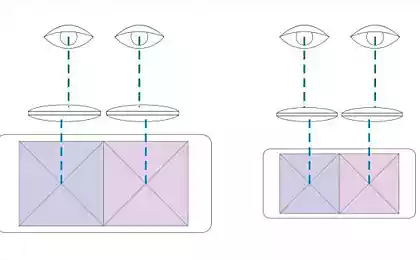154
In the future, your screen will touch you in response.

You comfort a friend in a chat room, but you can't take him by the shoulder. You buy shoes or contact lenses, compare products, but you can’t look the seller in the eye and laugh at his stupid joke. You are looking for advice on the medical part, but you cannot see the author of the advice. You flirt, but you can't send a kiss in the mail.
We can talk for a long time about the convenience and inconvenience of electronic operations. But on the Internet, we put personal comfort first, sacrificing the human connection and interpersonal contact that accompanies people’s interactions in the real world. This tactile deprivation made us “staffless” in the original sense of the word.
We lack human touch more and more, this important element in social glue. Even casual social touch matters. It unites people in society and in the workplace, generates emotions of gratitude, sympathy, sympathy, trust. People who are well served in a restaurant tend to leave a generous tip. Doctors who touch their clients are considered more caring, and these touches reduce patients’ stress levels and lead to better medical outcomes. Even shopkeepers sell more goods if they take customers by the hand.
It’s not just human touch that’s lacking online. Sociologists have shown that how an object feels has an important influence on a purchase decision, and customers prefer to buy from those sellers who allow them to touch their products. This is especially important in the case of shoes, bedding, clothing and cosmetics. And this positive effect of touch is not limited to just soft and silky things. In 1932, Sheldon and Ahrens wrote a now-classic book called Consumer Engineering, in which they urged manufacturers to make a product—whether a pen, a compact disc, or a pump—that fits in their hands. One recent study by Millward Brown found that the feel of a mobile phone is more valuable than the look for 35% of shoppers.
While retail chains continue to grow, there will come a time when that growth will be limited by the desire to touch a product on offer. The ability to simulate the experience of touch does not yet exist in mass distribution, but there are reasons to believe that such technologies will become incredibly popular in the near future. Engineers like Allison Okamura of Stanford and her colleagues are working on tactile devices that not only synthesize the texture and shape of objects, but also respond to user movements to give them a sense of weight or deformity. Such devices, in particular, will be used in robotic surgery, allowing the surgeon to sense tissue at one end of the surgical instrument, but very soon will enter the mass market.
For example, while we know there is a huge gulf from patent to implementation, Apple has filed a series of patents, including “Tactile Feedback Localization Method and Device.”
This system will allow localized delivery of vibration to a specific point of the touch screen to produce a more natural impression of printing. But this gross vibration is only the first step. A series of technologies are in development that will reproduce artificial touches with increasing accuracy. The local shape and texture will be transmitted by an array of contacts that will be activated by an electrical signal. Their tiny left-right and up-and-down movements will be powered by the numerous actuators technologies of today, including shape-memory alloys, pneumatic devices, microelectromechanical systems (MEMS) and piezoelectric cells. Importantly, these drive devices will adapt very quickly to work. Depending on the application, mobile contacts can be coated with an elastic membrane to create a smooth skin counterpart. Arrays of dynamically controlled contacts, which form a touchscreen, can also be placed on a flat surface like modern screens.
Other types of touchscreens are in development, which will allow you to feel even more subtile touches, thanks to an array of tiny electrodes that let electrical currents into the skin and artificially irritate nerve endings.
So in the future, when you pick up your iPhone 12 or Samsung Galaxy S10, it’s possible that it will provide an artificial tactile feel with such precision that you’ll be able to feel a sleek leather phone case before buying it online.
Source: hi-news.ru
Collective barbarism: Gustave Le Bon on the psychology of the masses
Why working while traveling is more productive than working in the office
























